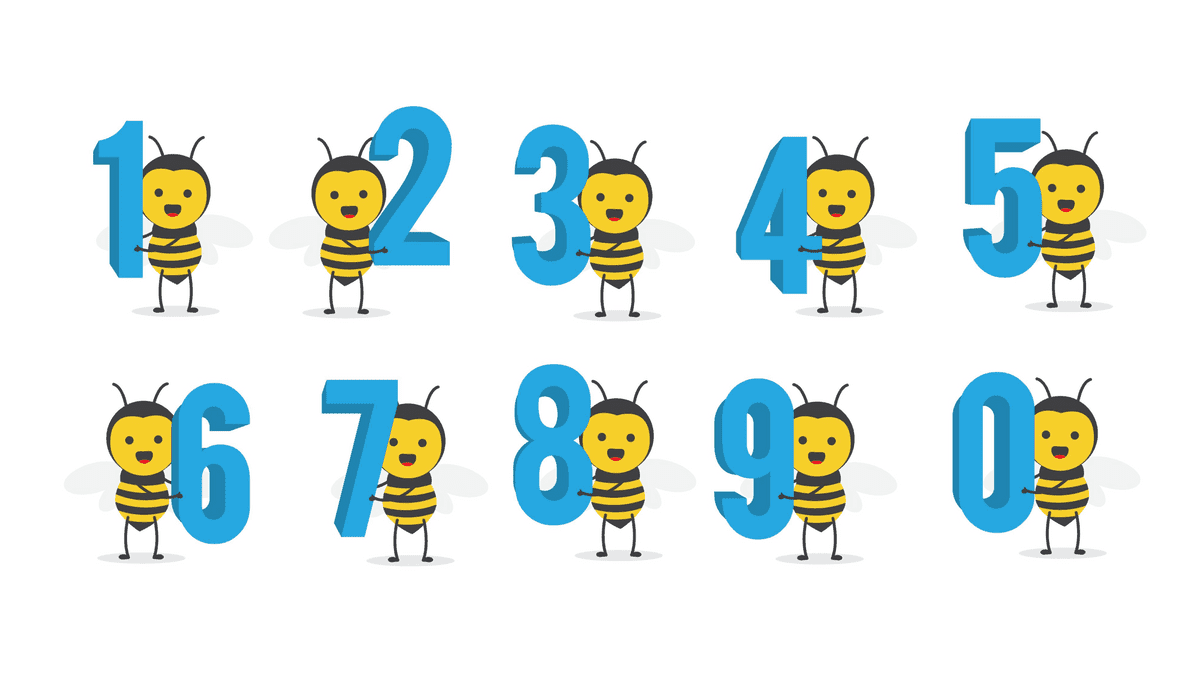
From the moment we’re born, we have this strange idea in our brains governing how we think about math. You almost certainly do it yourself: it’s the concept that smaller numbers go on the left, and larger ones on the right.
It’s such a ubiquitous concept that only a handful of societies are known to envision numbers any other way; even baby chickens have been shown to think of larger numbers as existing to the right of smaller ones. And a new study has found this same mathematical phenomenon in an even smaller noggin: that of the humble honeybee.
“Investigations on the numeric sense of bees have revealed a rich spectrum of numeric competences,” write the authors of the new paper, published this week in the Proceedings of the National Academy of Sciences. “We add [to this] the existence of a left-to-right spatial representation of number, which provides further evidence for the convergence between the numeric sense of vertebrates and invertebrates.”
In short, they explained, “bees may not count in the same way as vertebrates… but they definitely can extract a number from visual targets.”
Now, we know what you’re thinking: how do you get a bee to sit a math test? The answer involves more sugar and French booze than you might remember from your own pre-calc classes. First, the researchers set up a little classroom inside of an old wine box – Chateaux Fontarney, if you’re wondering – where they trained a group of captive honeybees to associate the numbers one, three, or five with a tasty sugary reward.
Thirty training sessions down, with the bees presumably riding a math and sugar high, it was time to get serious. This time, the bees were presented with a number that was either larger or smaller than the one they had been trained on, and given a choice: they could either match that figure with the panel on their left, or head to the right.
So, which one did they choose? “It depends on your reference number,” biologist Martin Giurfa, who led the study, told Science News. When presented with “three”, for example, bees trained on “one” overwhelmingly flew to the panel on the right – a full 23 out of 32 bees fell into this category, in fact, which is way more than would be expected from random chance.
Conversely, bees trained on “five” headed left at almost exactly the same rate. “That’s exactly the concept of the mental number line,” Giurfa said. “You align numbers based on your reference.”
So, does this prove that bees have an internal number line, just like us? Well, the jury is still out: “the oversimplification of complex human concepts, such as that of ‘number line,’ must be avoided,” University of California, San Diego cognitive scientist Rafael Núñez warned Science News. “They severely distort the reality of the phenomena that make them possible.”
Even among humans, Núñez pointed out, the idea of a “number line” that runs from left to right is not universal. In some Arabic cultures, people have mental number lines that go right-to-left; the Tsimane people of Bolivia order their numbers in just about any direction they feel like; and in the Indigenous Yupno people of Papua New Guinea, whom Núñez himself has studied, there’s no mental number line at all.
A left-to-right numerical preference may well have a biological basis, then – and this study certainly lends credence to that idea – but exactly why this may be is a question the authors have left for future research. One possibility is suggested in the paper, however: “in principle arbitrary, the left-to-right mapping direction during evolution may have been imposed by brain asymmetry,” posit the authors.
“Such a common and ancient trait, which occurs in a wide range of vertebrates and invertebrates, may have helped different species better process different kinds of information,” they write. “We suggest, therefore, that the ability to order numbers spatially has probably emerged in different species exhibiting asymmetries in information processing between left and right brain hemispheres.”
Either way, Giurfa believes the study has deeper implications than just explaining how nerdy bees have been all this time. Knowing that bees think of numbers as growing from left to right, he thinks, might just give us an insight into our own humanity.
“We are different from animals in some aspects,” he told Science News, “but we are very similar in others. Denying this similarity is not what will help us understand what we are.”
The study is published in the Proceedings of the National Academy of Sciences.
Source Link: Bees May Think Of Numbers The Same Way You Do